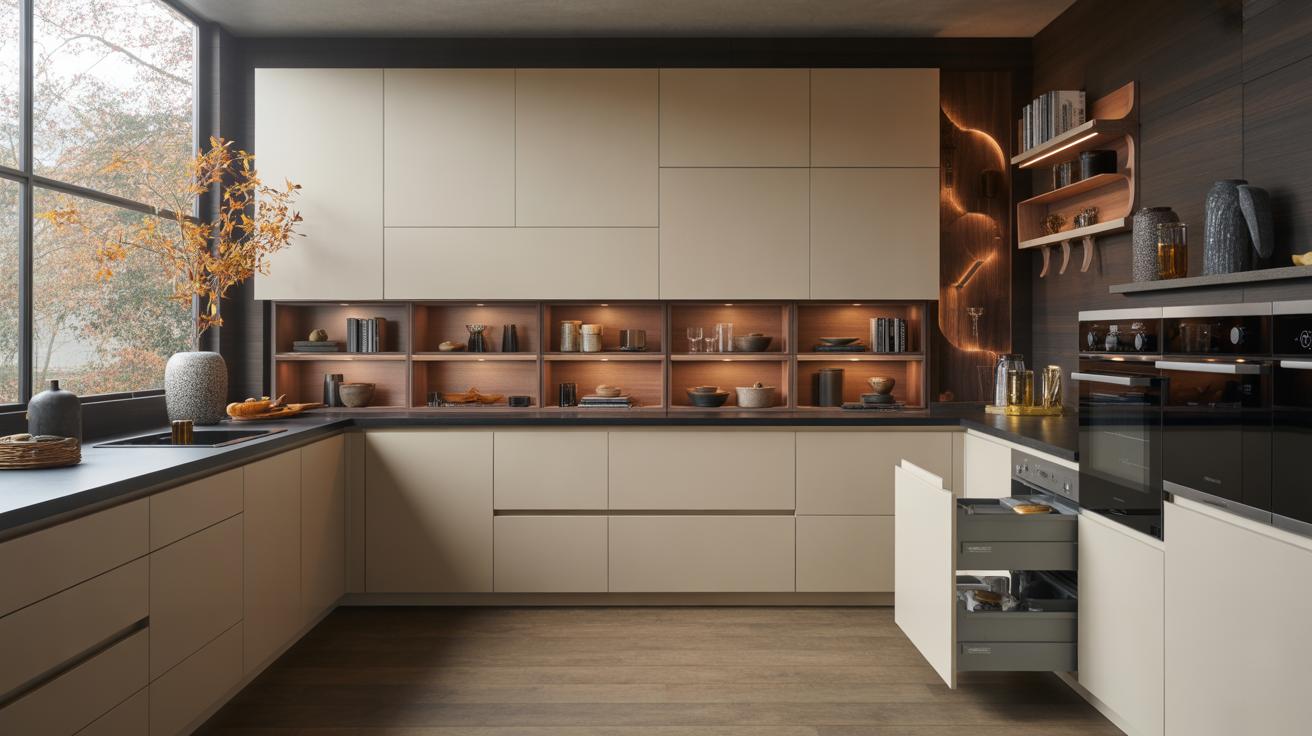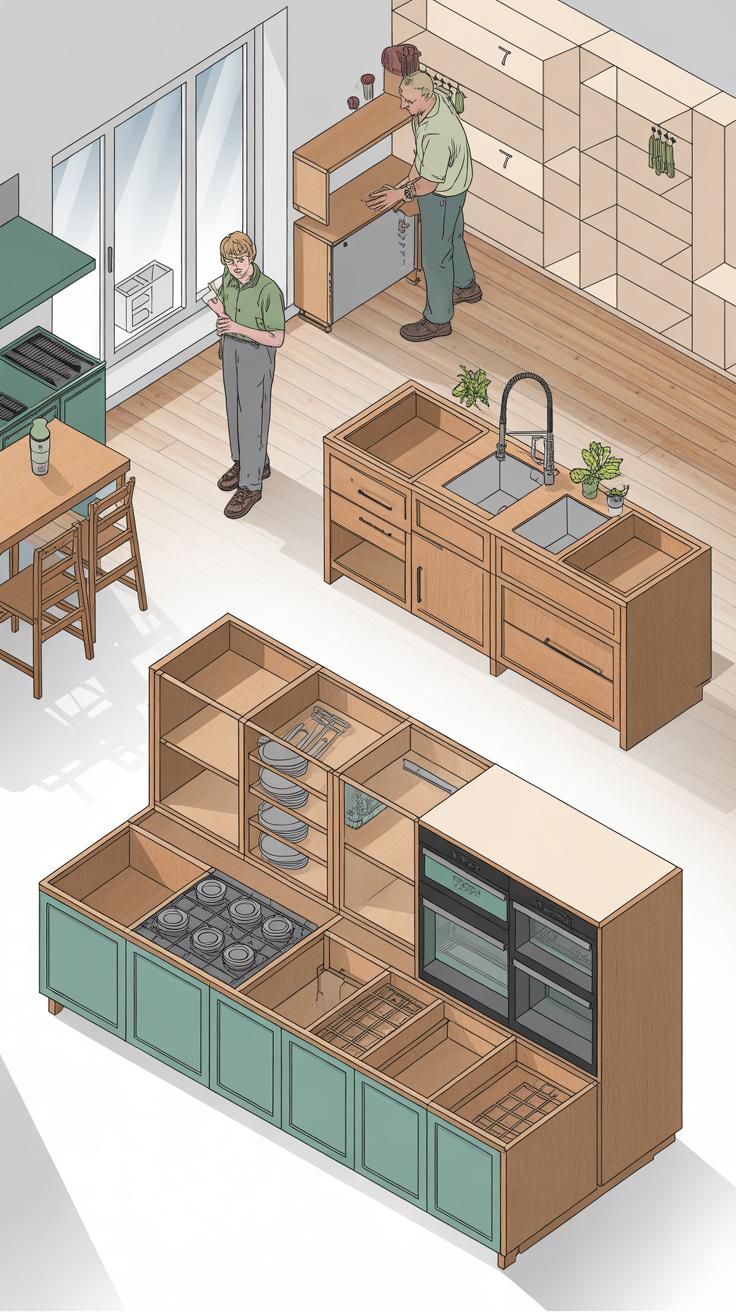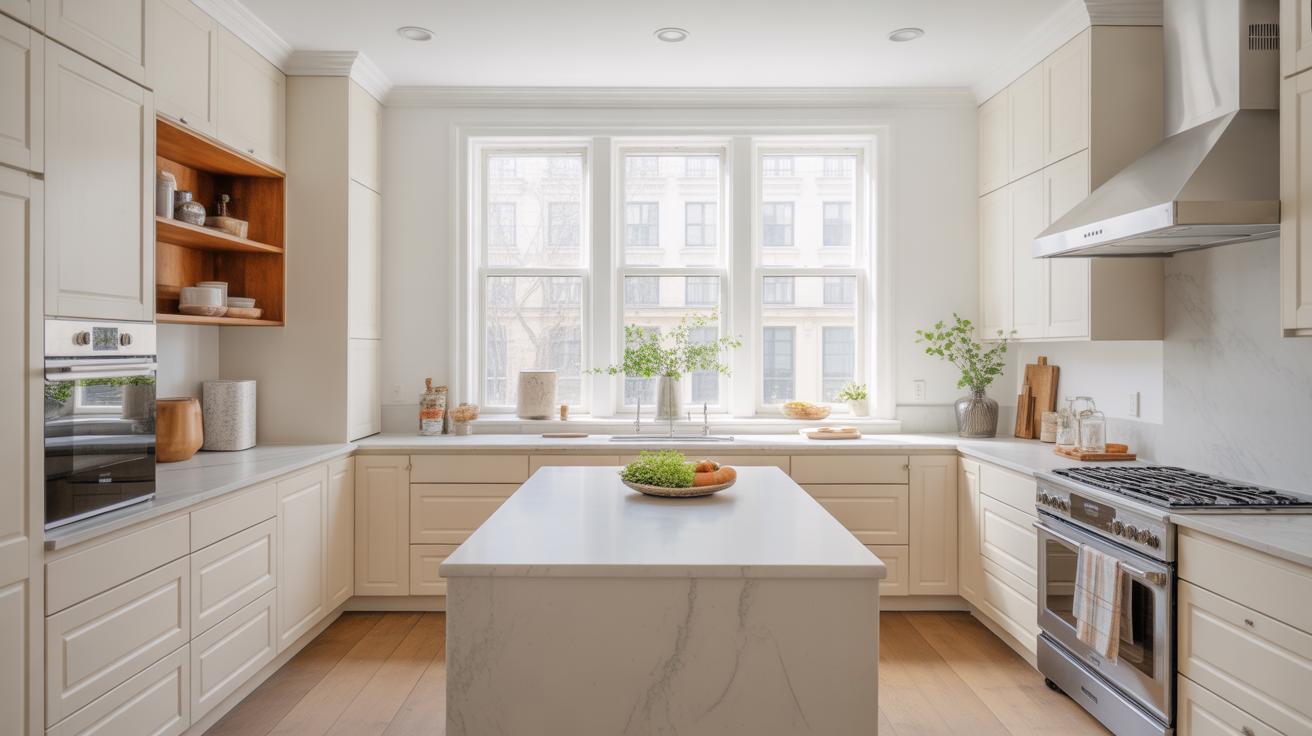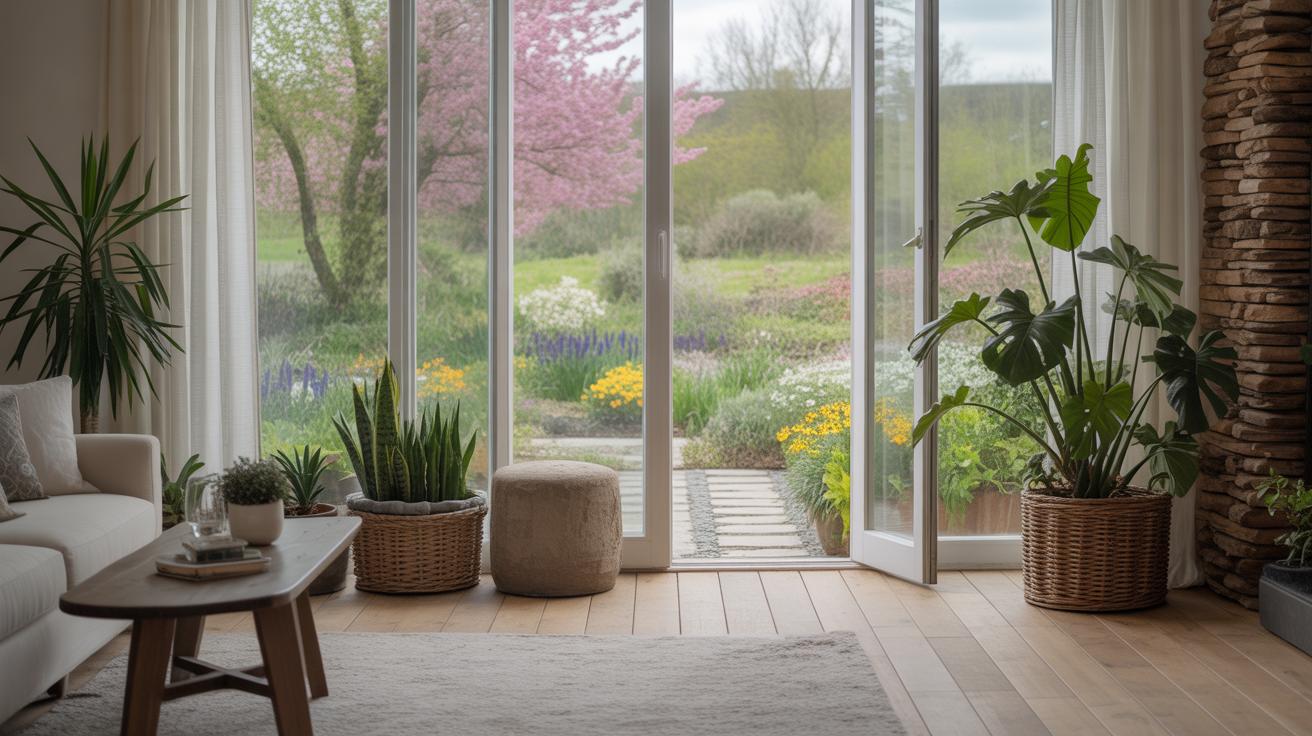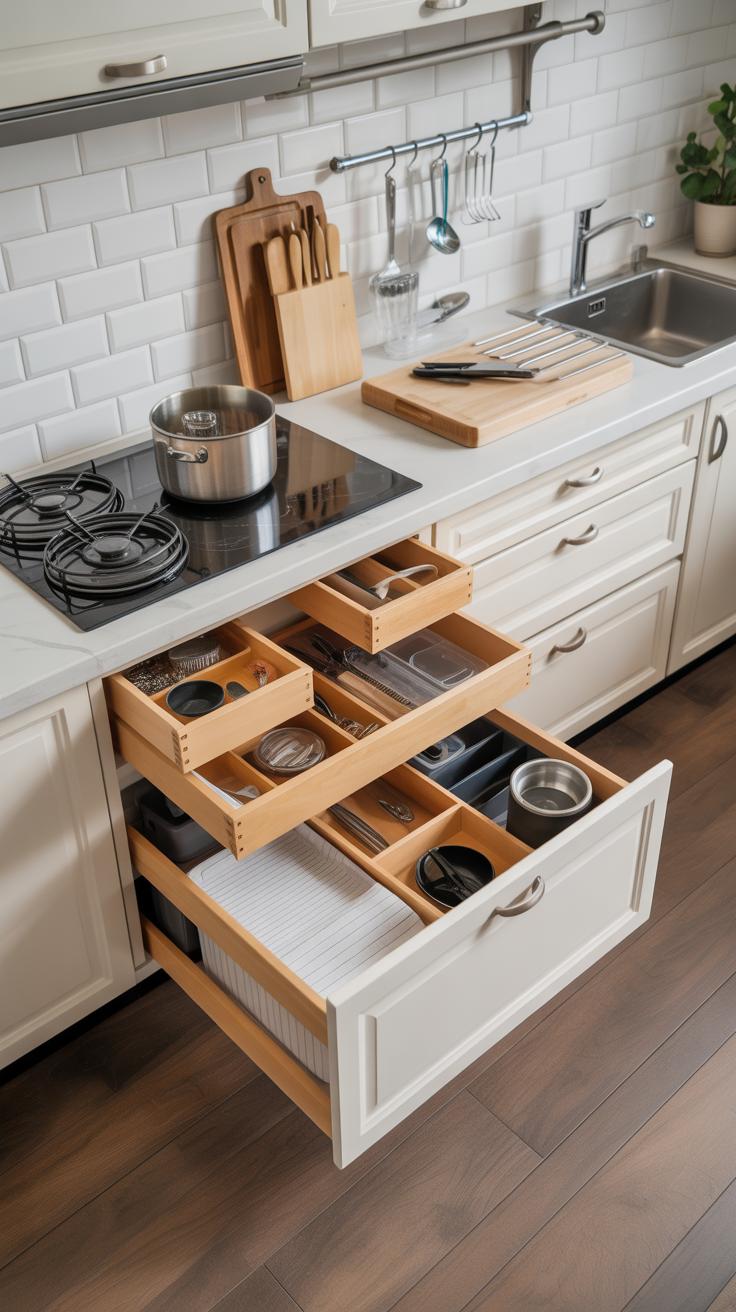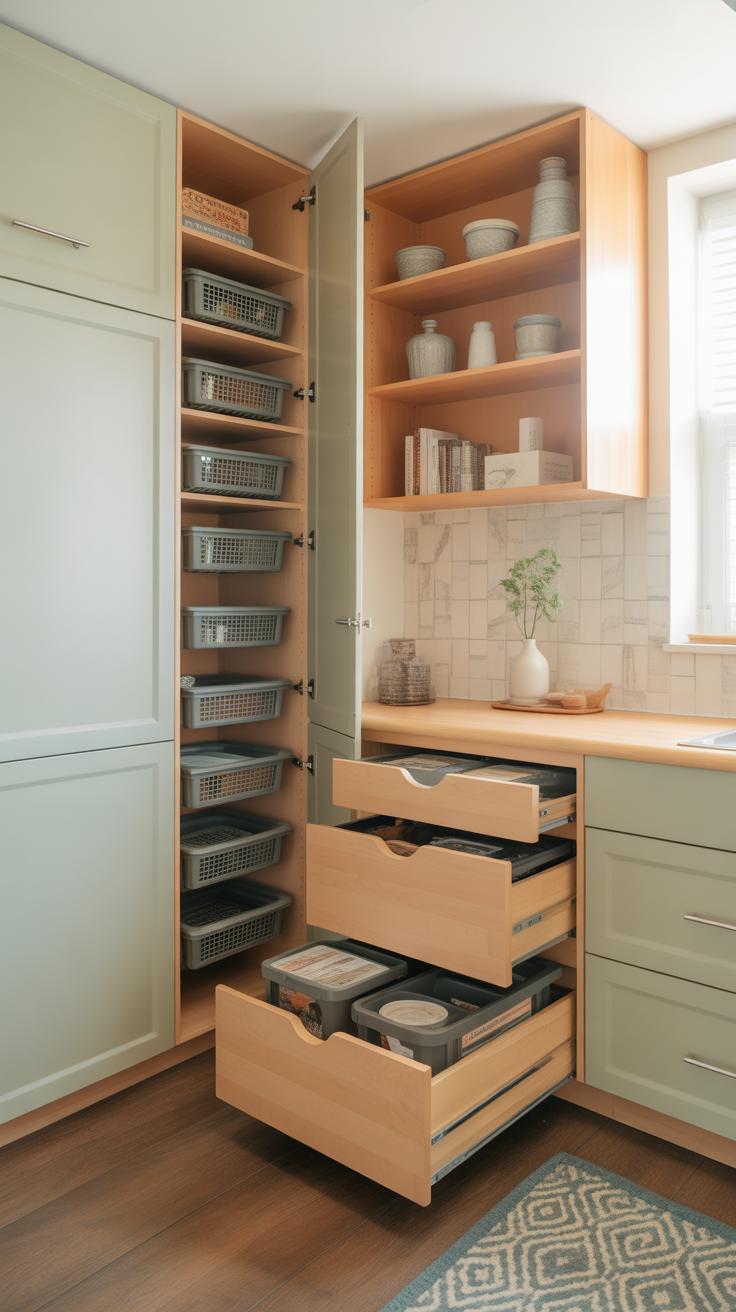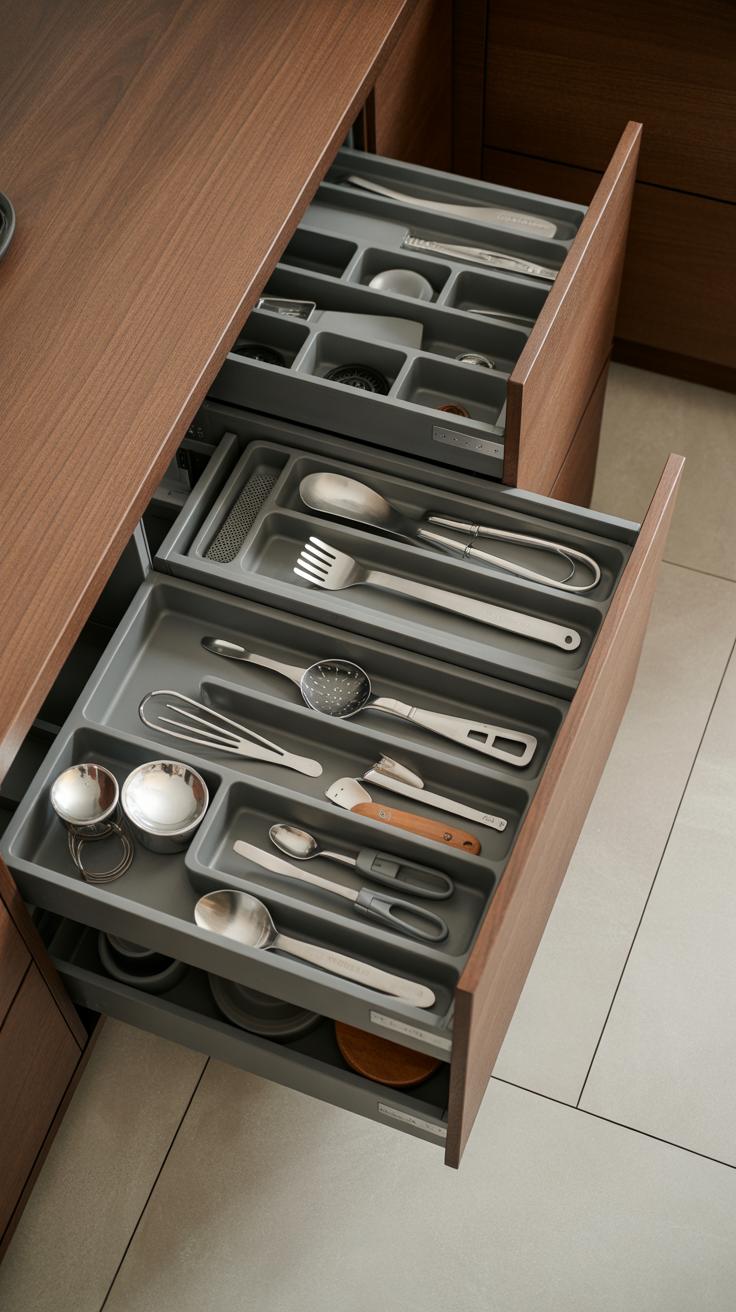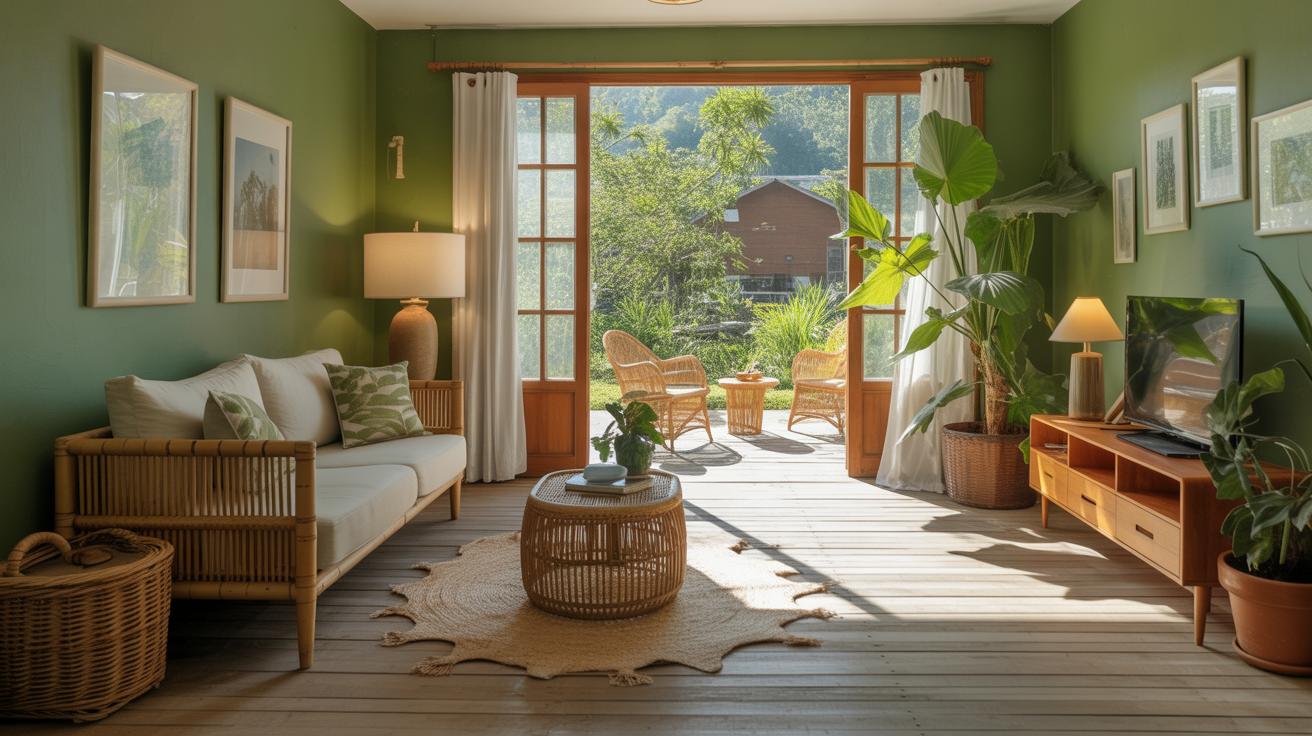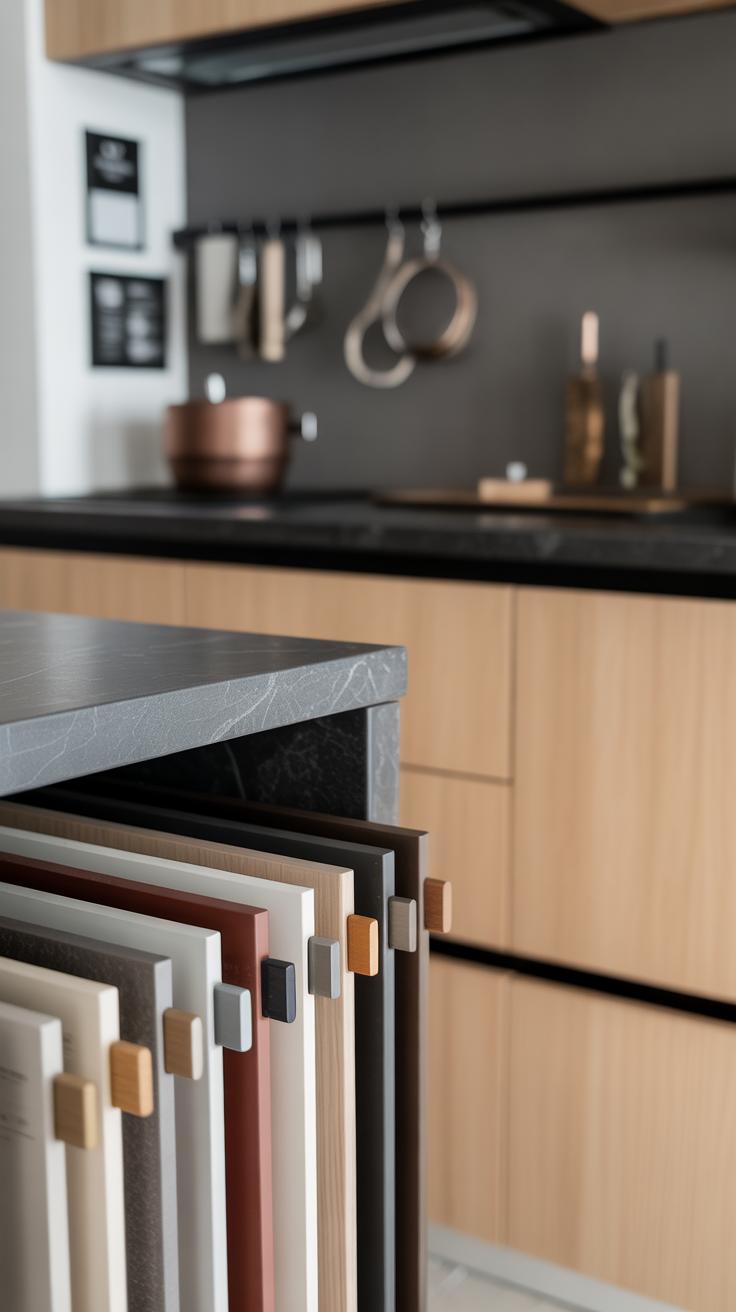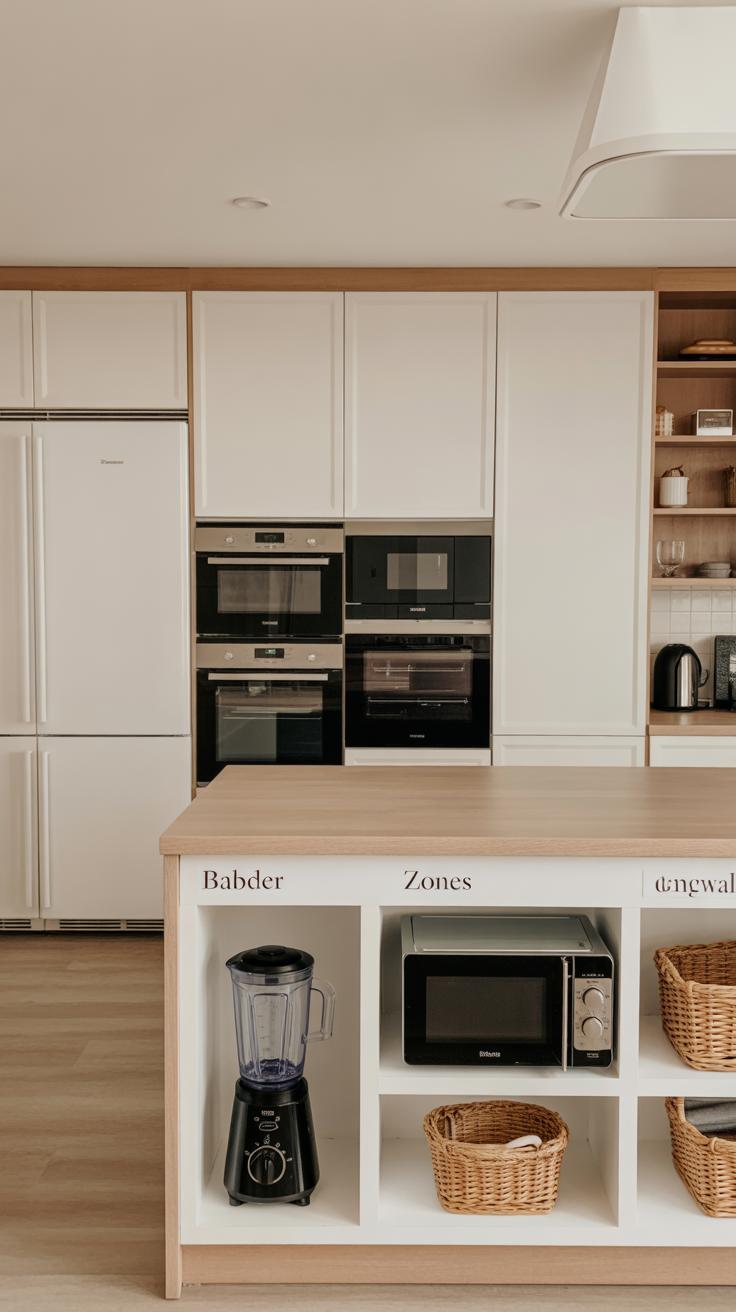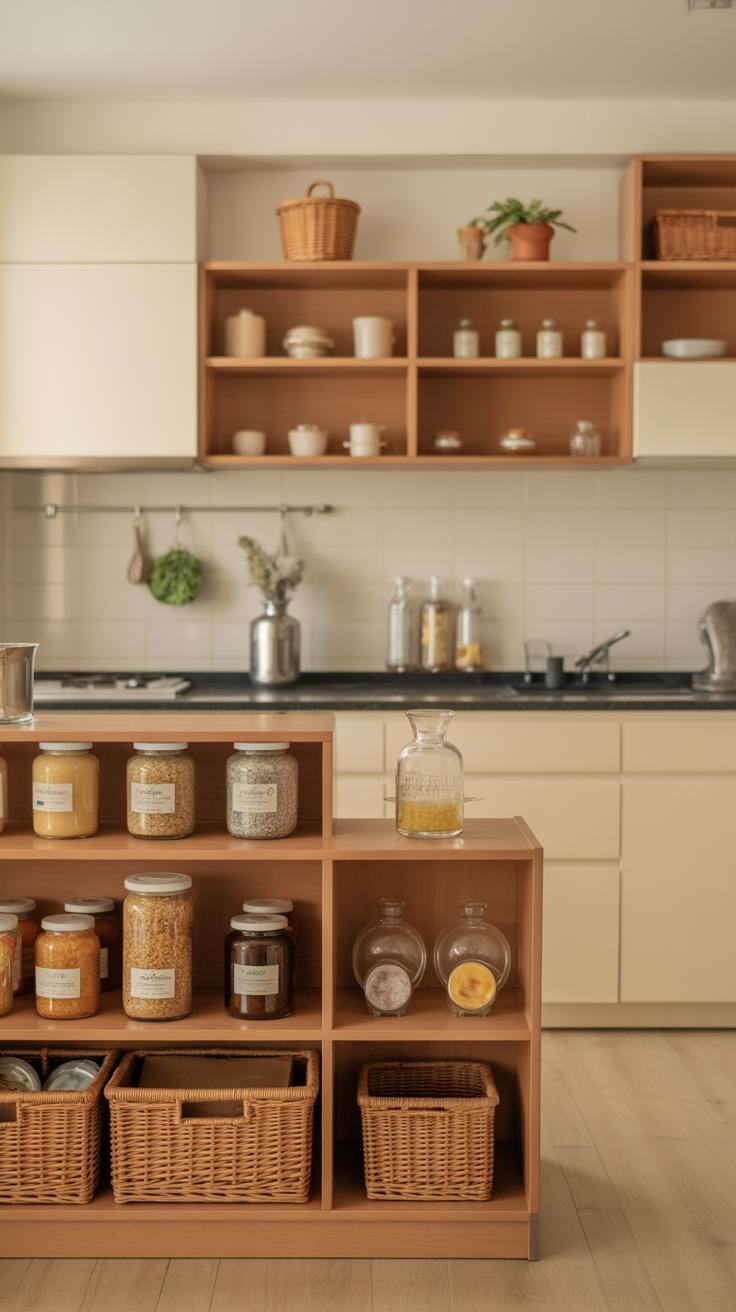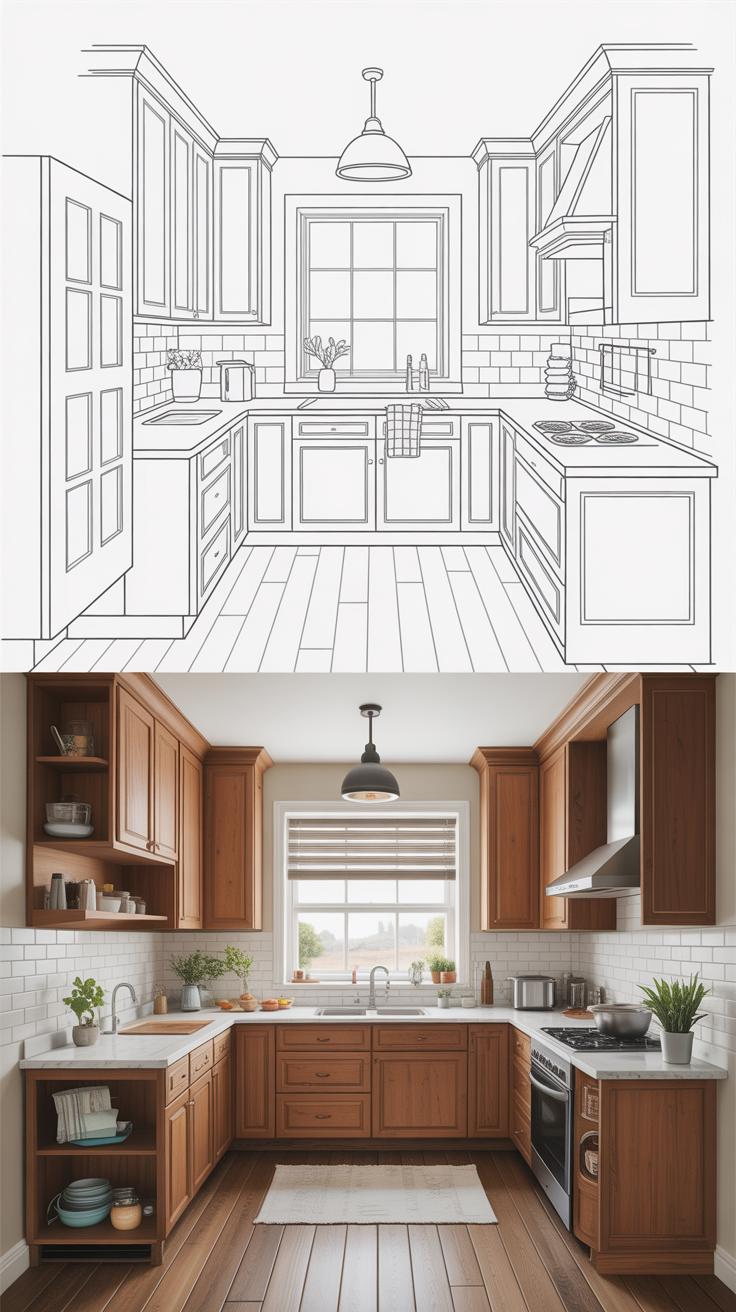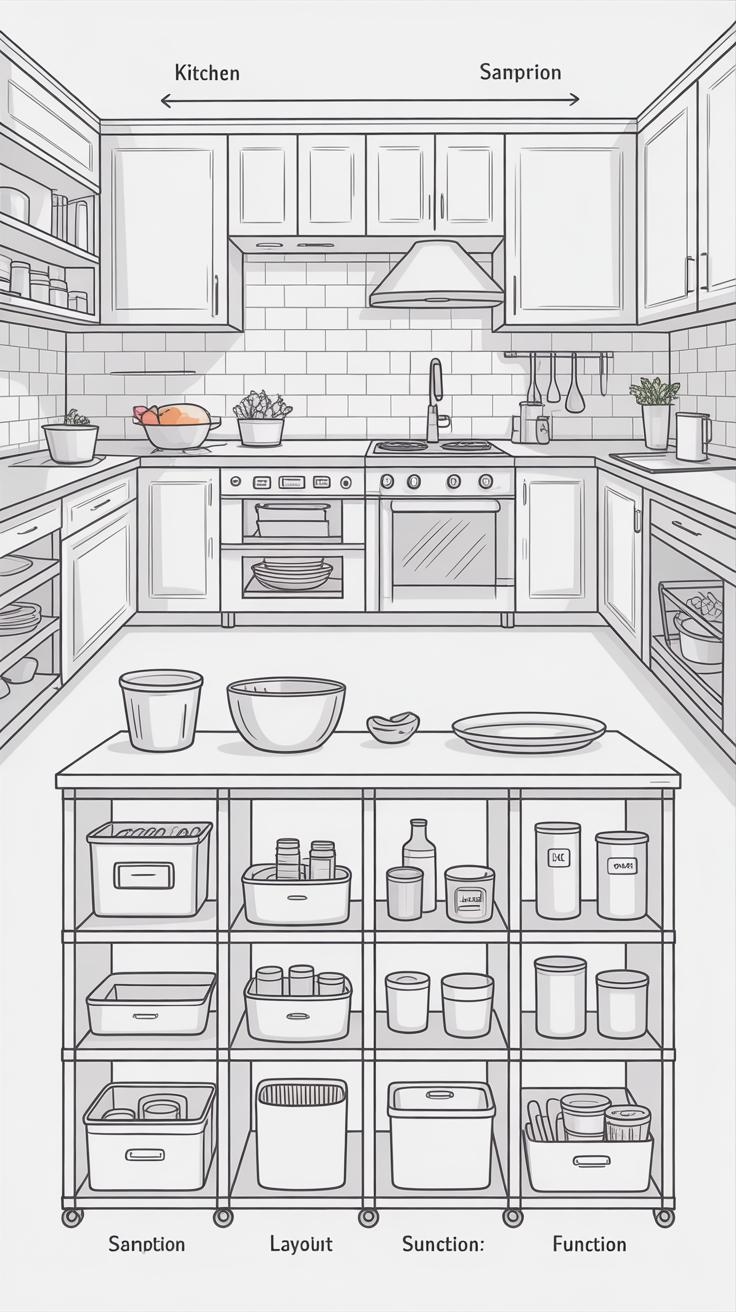Introduction
Modular kitchen design is a popular choice for many homeowners. It offers flexibility and organization in kitchen spaces. Smart storage solutions are a critical part of these designs. They help you make the most of your kitchen area. By organizing items efficiently, your kitchen looks tidy and serves your needs better.
In this article, you will explore different smart storage options for modular kitchens. From cabinets to racks, ideas and tips will help you improve your kitchen’s functionality. You will see how well-planned storage makes cooking and cleaning easier. Let’s discover how to transform your modular kitchen space with smart storage solutions.
What Is Modular Kitchen Design
Modular kitchen design breaks down your kitchen space into separate, manageable units called modules. Each module typically includes cabinets, drawers, shelves, and counters designed to fit together but can also work independently. This means your kitchen isn’t just one big fixed area; it’s a collection of distinct parts that you can arrange or replace as you like.
What makes a kitchen modular is exactly this: flexibility in structure, with standardized components. You might see wall cabinets, base cabinets, tall cabinets, and different types of counters all assembled together to make the kitchen functional and organized. Each piece is designed to fit specific roles, like storage, food prep, or housing appliances.
These kitchens have become popular because they adapt easily to different spaces and lifestyles. You don’t have to build everything from scratch or renovate extensively; you can simply swap modules out or add new ones. Plus, if your kitchen space is awkward or small, a modular approach often makes better use of every corner. It’s practical but not boring, and that’s probably why many prefer them over traditional, fixed setups.
Key Features Of Modular Kitchens
Modular kitchens come with several notable features that tend to catch people’s attention:
- Flexibility: You can customize and rearrange modules as needed. Say you want to add a new drawer or change the counter height, it’s possible without major hassle.
- Easy Installation: The units are prefabricated, so installation is quicker than a conventional kitchen. Imagine picking pieces like furniture, then putting them together like a puzzle. No long, drawn-out construction.
- Space Management: These designs pay close attention to how space is used. Corners, vertical spaces, and under-counter areas are often optimized with pull-out shelves or rotating trays, making it easier to store more than you might expect.
For example, a pull-out spice rack tucked between two cabinets can save counter clutter. Or a tall cabinet with adjustable shelves fits various kitchen tools and keeps things tidy. These little features hint at the thought put into modular kitchens.
Benefits Of Modular Kitchen Design
The appeal of modular kitchens goes beyond just how they look. They offer benefits you can actually feel day to day.
- Customization: You pick modules based on your specific needs. If you cook a lot, you might want more countertop space or extra drawers. If your kitchen is small, you might choose compact units that still provide decent storage.
- Ease of Maintenance: Since components are separate, repairing or cleaning is simpler. Damaged parts can be replaced without tearing down the entire kitchen, which can save both time and frustration.
- Cost-Effectiveness: Sometimes modular kitchens are cheaper compared to fully custom-built ones. Prefabricated units often lower the cost and reduce installation time, helping keep expenses within reach.
When I first considered modular options for my own kitchen, I appreciated how easy it was to imagine changes in a modular setup versus a traditional, fixed design. That feeling alone makes this style worth considering if you want a practical kitchen that grows with your needs.
Why Smart Storage Solutions Matter
Smart storage in a modular kitchen isn’t just a nice-to-have; it really shapes how you feel about your space. When everything has a place, you don’t waste time hunting for a pan or a spice jar. This orderliness saves space too — especially in kitchens where every inch counts. It’s almost surprising how much clutter disappears when storage is planned well.
Think about cooking and cleaning. When cabinets open to reveal pull-out shelves with all your pots neatly stacked, or when knives and utensils are tucked within easy reach, your workflow flows better. You spend less time juggling things or clearing counters just to chop or clean. A well-stored kitchen? It just makes those routine tasks easier, maybe even a little less tedious.
Maximizing Kitchen Space
You’d be amazed at how clever storage uses awkward corners or narrow gaps. For example, a slim pull-out pantry tucked beside your fridge can hold spices or canned goods that otherwise clutter your countertop. Compact storage isn’t just for tiny kitchens either; even larger kitchens benefit from specialized drawers designed for lids, trays, or baking sheets.
Look at vertical space too. Tall cabinets make room for stacked containers or seldom-used appliances. Sometimes, sliding shelves that extend fully out let you reach the back without digging around blindly. If you think you’re running out of space, chances are you just haven’t found the right storage bit to squeeze in yet.
Reducing Clutter
Clutter has a way of sneaking up on kitchens, especially when storage doesn’t quite fit your needs. Smart storage helps keep things organized by fitting your items perfectly. It might be tempting to buy generic boxes or just shove things anywhere, but tailored storage makes a difference.
Consider your kitchen’s size and how you use it before choosing storage units. Too large, and they crowd the space; too small, and you end up piling over. Sometimes, a few open shelves for everyday essentials paired with closed cabinets for bulkier items strike the right balance. You don’t have to have everything out all the time—smart storage lets you decide what deserves to stay visible and what doesn’t.
Overall, smart storage solutions can change how your kitchen looks and feels. Sometimes, a small drawer insert or an adjustable rack can reduce clutter more than a complete renovation. So, what storage problem do you face most often? Finding the answer might be easier than you think.
Types Of Storage Modules
Modular kitchens rely on a mix of storage modules that serve different purposes. Cabinets, for one, are the backbone of storage. They keep your pots, pans, and less frequently used appliances tucked away, which helps clear up the kitchen visually. Cabinets often come with adjustable shelves, which is great because you can change the height depending on what you need to store—tall bottles one day, stacked bowls the next. Drawers complement cabinets well by offering easy access to smaller items like cutlery and utensils.
Drawers become way more useful with dividers. I’ve found simple wooden or plastic dividers make a big difference, stopping items from jumbling together. This not only helps you find things faster but keeps everything from getting scratched or damaged.
Open shelves and racks add a totally different vibe. They’re perfect for items you reach for all the time—spices, cups, or decorative bowls. Since these are exposed, placement matters a lot. Placing them near your prep area can save time when cooking but remember, open shelves also demand tidiness. They can look great but become cluttered quickly if you’re not careful.
Racks, especially for hanging utensils or mugs, help use vertical space. They give the kitchen character while keeping essentials visible and reachable. Still, not every kitchen setup benefits from open storage; it depends on your cooking habits and how much effort you want to put into keeping the area neat.
Innovative Storage Solutions
Pull-Out Pantries
Pull-out pantries are narrow, vertical storage units that slide out like drawers, revealing shelves packed with your kitchen essentials. They fit neatly into slim spaces that might otherwise remain unused. You’ve probably seen these in showrooms but maybe never thought they’d suit your kitchen—yet they do, especially if you often hunt for spices or canned goods. With everything visible at a glance, no more digging at the back of a cabinet.
The design usually involves multiple tiers, making it surprisingly easy to organize items by size or type. You can stack jars, bottles, and cans without worrying about them toppling over. From my experience, it’s quirky how such a simple concept suddenly feels like a solution you’d wished for earlier. Plus, cleaning becomes simpler since you can pull the whole thing out.
Corner Carousels
Corner carousels, or lazy Susans, tackle what many kitchens struggle with: those awkward corner cabinets. Instead of dead space, this mechanism uses circular, rotating shelves that spin on a central axis. You turn the carousel and each shelf presents what’s stored there—no more stretching or bending into tight corners.
What’s interesting is how the carousel transforms wasted real estate into accessible storage. These units generally feature two to three rotating tiers, tailored to fit your cabinet’s angles. Space-wise, it’s clever—you keep your pots, pans, or even dry goods tucked away yet easy to retrieve. I’ve noticed it’s sometimes tricky to fit larger appliances here though, so consider what you store carefully.
Both pull-out pantries and corner carousels introduce storage that adapts to your kitchen’s quirks, making day-to-day cooking less of a hassle. They save surprising amounts of space, but more importantly, they save time—and that’s something any kitchen user will appreciate.
Choosing Materials For Storage
When you think about modular kitchen storage, the choice of materials shapes not just the look but also how long your storage lasts and how it behaves day to day. Wood, metal, and plastic each bring something different to the table—sometimes it’s about style, sometimes toughness, and often about how much you want to spend. Picking the right one can feel a bit tricky, especially if you haven’t decided what matters most to you yet.
Wooden Storage Options
Wood feels timeless in a kitchen. There are a few common types used for storage modules:
- Teak: Known for its durability, it resists moisture well and looks great over time, but it can be pricey.
- Maple: A bit lighter in color, it’s strong and has a smooth finish that many find appealing.
- MDF or Plywood: These are engineered woods, more affordable and stable, although not as lasting as solid wood.
Wood tends to bring warmth and a natural look to your kitchen, but it does need some care to avoid warping or staining. Still, many prefer the feel of real wood despite the upkeep because it just ages well, even if it’s not the cheapest choice.
Metal And Plastic Choices
Metal and plastic are quite different but can be really useful, especially in specific settings.
- Metal: Steel or aluminum modules offer strength and a modern look. They handle moisture and heat better than wood, making them great for dishwasher-adjacent storage. Metal can feel cold or industrial, which might not suit every kitchen vibe.
- Plastic: Often used for internal organizers or lightweight shelves, plastic is affordable and easy to clean. It can wear down over time and may not support heavy loads well, so it’s best for smaller items or temporary storage solutions.
Choosing metal or plastic often depends on how you use your kitchen. If you want something low-maintenance and aren’t fussed about the cold feel, metal might be the way to go. For flexible, budget-friendly inserts and bins, plastic does the job well but doesn’t always last as long.
Organizing Kitchen Tools And Appliances
When it comes to organizing your kitchen tools, the goal is clear: keep what you need close at hand but still safe. It’s tempting to just toss all your knives, spoons, and spatulas into a drawer, but that often leads to frustration and, occasionally, a prick on your finger. Using magnetic knife racks can be a game-changer — they free up drawer space and keep blades visible and protected. For spoons and spatulas, consider a countertop utensil holder that keeps them upright and easy to grab. Or, if you’re short on counter space, a hanging rail with hooks can hold items without clutter.
Big appliances? They need a little more thought. Mixers, blenders, and toasters take up quite a bit of room, yet are essential. If you’re lucky enough to have deep cabinets or pull-out shelves, these work well to tuck your large appliances away but still access them without a struggle. Otherwise, dedicated appliance garages — cabinets with lift-up or roll-up doors — keep bulky items out of sight without needing to haul them around. Remember, storing them close to relevant prep areas saves time. Why drag a mixer across the kitchen every time?
Think about your routine: which tools do you use every day, and which ones only appear on special occasions? Keeping daily items in easy reach and seasonal ones out of the way helps prevent chaos. It’s a balancing act, maybe a bit frustrating at first, but once you find that rhythm, your kitchen will feel more… manageable.
Maintaining Your Modular Kitchen Storage
Cleaning Storage Units
Modular kitchens often feature cabinets and drawers made of different materials—wood, laminate, metal, or glass. Cleaning each requires a slightly different approach. For wooden units, a soft cloth with mild soapy water usually does the trick; just avoid soaking the surfaces, which can cause warping over time. Laminate surfaces can handle a gentle multi-surface cleaner, but harsh abrasives scratch them easily. Metal hardware and handles often build up grease and fingerprints, so a quick wipe with a vinegar-water mix can refresh them nicely.
Glass fronts or panels need extra care—use a regular glass cleaner or diluted vinegar but be gentle to avoid streaks. It’s tempting to spray directly, but spraying onto a cloth first keeps moisture away from edges where it could seep in.
Keeping Storage Organized
Keeping your storage neat isn’t just about occasional tidying. Developing small habits can really help. For example, after cooking, try to put away items immediately rather than stacking them temporarily—this reduces clutter and saves time later. Also, reassess your storage contents every few months; you’d be surprised how items multiply unnoticed.
Try to designate specific spots for commonly used utensils or ingredients. It feels obvious, but I catch myself tossing things back wherever there’s space. A drawer meant for spices shouldn’t become a catch-all. Consider labeling shelves or compartments if you’re prone to forget exact places—sometimes a little nudge keeps things orderly.
And, of course, allow some flexibility. Not every corner needs to be perfectly tidy all the time, but a routine of small resets can prevent chaos. After all, storage should serve your kitchen life, not complicate it.
Adapting Storage To Your Kitchen Size
Smart Storage For Small Kitchens
When space is tight, every inch counts. Small kitchens call for clever storage that stretches upward instead of outward. Think tall cabinets or open shelves that make use of wall height you might ignore otherwise. It’s not just about stacking things high, though—there’s a balance between accessibility and crowding the space visually.
Multi-use modules can be a game changer here. Cabinets with pull-out racks, fold-down counters, or even hidden compartments can keep essentials close without feeling cramped. For example, a pull-out cutting board within the counter saves surface space but still offers functionality. I once tried stacking containers on shallow shelves and realized it created more hassle than help—size and visibility matter as much as volume.
Consider adding hooks under shelves for hanging mugs or utensils. It might sound simple, but it frees up drawer and cabinet space. Vertical storage doesn’t just mean shelves—think magnetic strips for knives or spice racks that slide. The goal isn’t just to fit your stuff but to keep it usable without a daily frustration.
Storage Ideas For Large Kitchens
In larger kitchens, you have options that smaller spaces can only dream of. Bigger cabinets, deep drawers, and expanses of counter space let you get creative. You can dedicate entire cabinets for specific uses—say, a pantry cabinet with pull-out baskets or a dedicated baking station with all tools within reach.
Island storage really shines here. An island can be more than a prep space; it’s an opportunity for extra drawers, wine racks, or even built-in appliances. You might hesitate, thinking it fills the room too much, but when planned well, it balances space and storage perfectly.
Another idea is to install tall pantry units with adjustable shelves, so you can reorganize as your needs change. I know some people who use one section strictly for rarely used tools and another for everyday items, making it easier to find what they want without searching too long. It’s tempting to fill all that space, but keeping some breathing room can actually help things feel less cluttered.
Planning Your Modular Kitchen Storage Layout
When planning storage in your modular kitchen, the flow of work should guide every decision. Think about the way you move through the kitchen—grab a pot, reach for spices, rinse veggies—and arrange storage to follow that rhythm. It’s easy to overlook this until you’re stuck bending or stretching awkwardly every day.
Balancing open and closed storage can be tricky. Open shelves invite you to display attractive items or everyday essentials, but too many leave a cluttered feel. Closed cabinets hide away mess and bulky tools but can make the space feel boxed in. A mix tends to work best—maybe open racks for your favorite mugs, closed cabinets for pots and pans.
For easy access, place frequently used items close at hand. Pull-out drawers for utensils near the prep area, spice racks just beside the stove, storage bins under the sink for cleaning supplies. Think small zones within your kitchen, each dedicated to a task, stocked with exactly what’s needed. I once misplaced a set of measuring spoons, and it was a small frustration that could have been avoided if the storage layout was thought through better.
Ask yourself: do you want to see everything at once? Or prefer the tidy look of hidden storage? The answer often changes with time or season, so leave room to adapt your layout as your kitchen habits evolve—because that rarely stays the same for too long.
Conclusions
Smart storage solutions are essential for making your modular kitchen work well. Choosing the right designs and setups helps you keep your kitchen neat. It also makes it easier to find and use kitchen tools and ingredients. Smart storage makes cooking less of a hassle and more enjoyable.
By applying simple storage ideas and making careful choices, your modular kitchen becomes a useful and pleasing space. This approach can save you time and reduce stress in daily kitchen tasks. Start using smart storage solutions today and feel the difference in your kitchen’s design and function.

